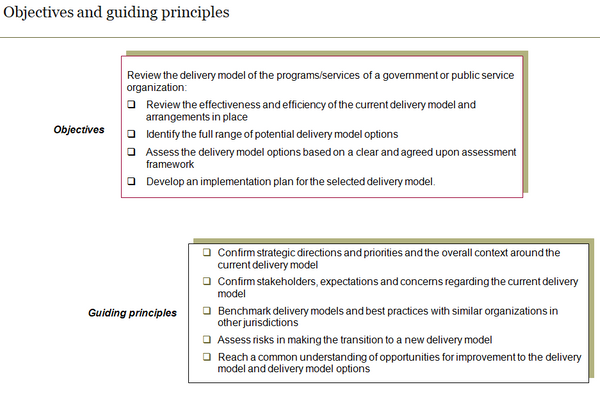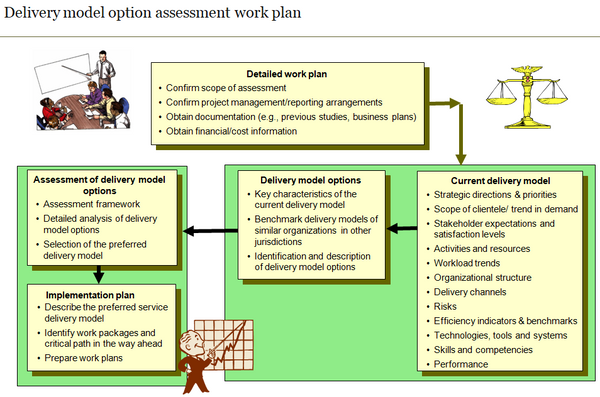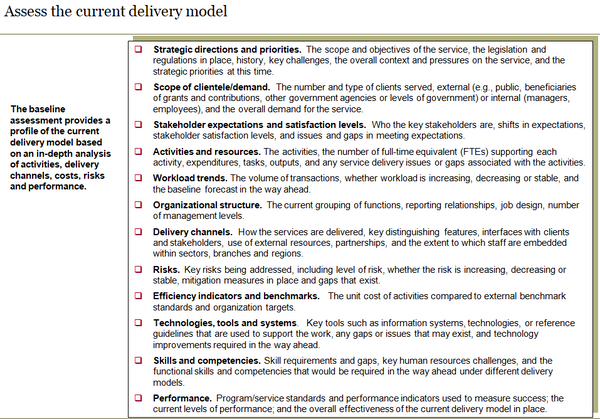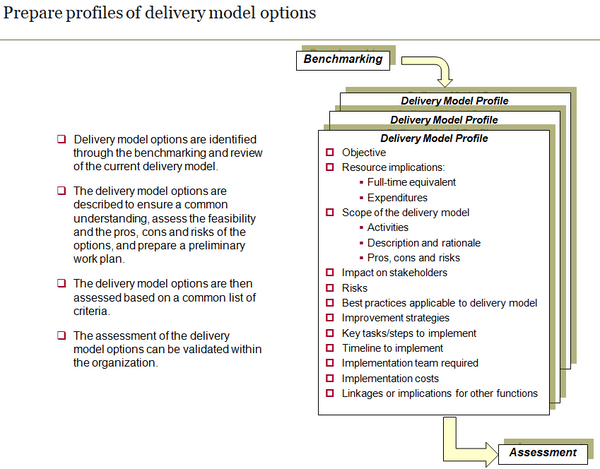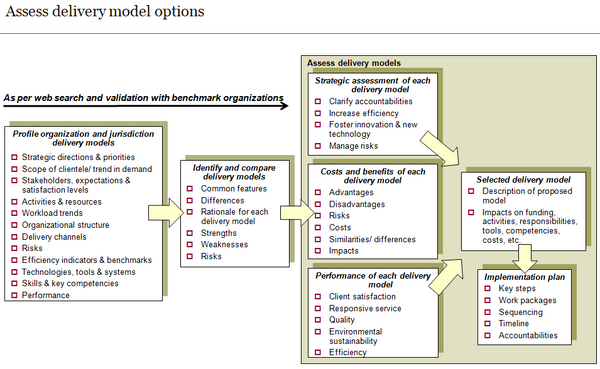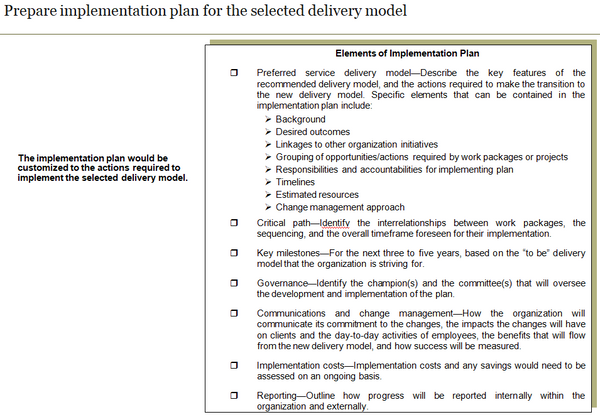Communications Delivery Model Option Assessment (8 slides)
Review how the communications function is delivered within your government agency.
Communications delivery assessment toolkit
The Communications Delivery Model Option Assessment Tool (8 slides in PowerPoint) provides a work plan to assess delivery model options for the communications function. The slides (see preview charts) include:
- A checklist to help assess the current communications delivery model
- Examples of delivery model options for communications
- The typical contents of profiles used to describe the delivery model options
- An assessment approach
- Outline of implementation plan to move to the preferred delivery model.
When you purchase the toolkit, you will receive an email with a link to download the Communications Delivery Model Option Assessment Tool (8 slides in a PowerPoint fully editable format) as well as the Delivery Model Option Assessment Guide (12 pages in Word).
Service delivery models--Communications function
Examples of delivery model options for the communications function include:
-
Decentralized—Each program/sector manages its own communications activities. A corporate communications group establishes overall strategic directions and communications policies and standards.
-
Corporate strategic delivery model—The corporate communications group delivers organization-wide strategic communications, and provides functional direction. Each program/sector delivers operational communications activities.
-
Mixed model—The corporate communications group delivers organization-wide strategic communications as well as operational communications for some programs/sectors; larger programs/sectors deliver their own communications activities.
-
Centralized delivery model—Corporate communications group delivers all communications activities on behalf of programs/ sectors and manages funding.
Communications service delivery management--Key considerations
Key considerations in designing the communications delivery model include:
- New methods of communications through social media
- New digital technology
- The scope of communications activities carried out
- The role of the corporate communications group
- The involvement of sectors/programs in communications activities
- The delineation of responsibilities between corporate and the sectors/programs
- Responsibility for the control of communications funding
- The reporting relationships of communications staff.







